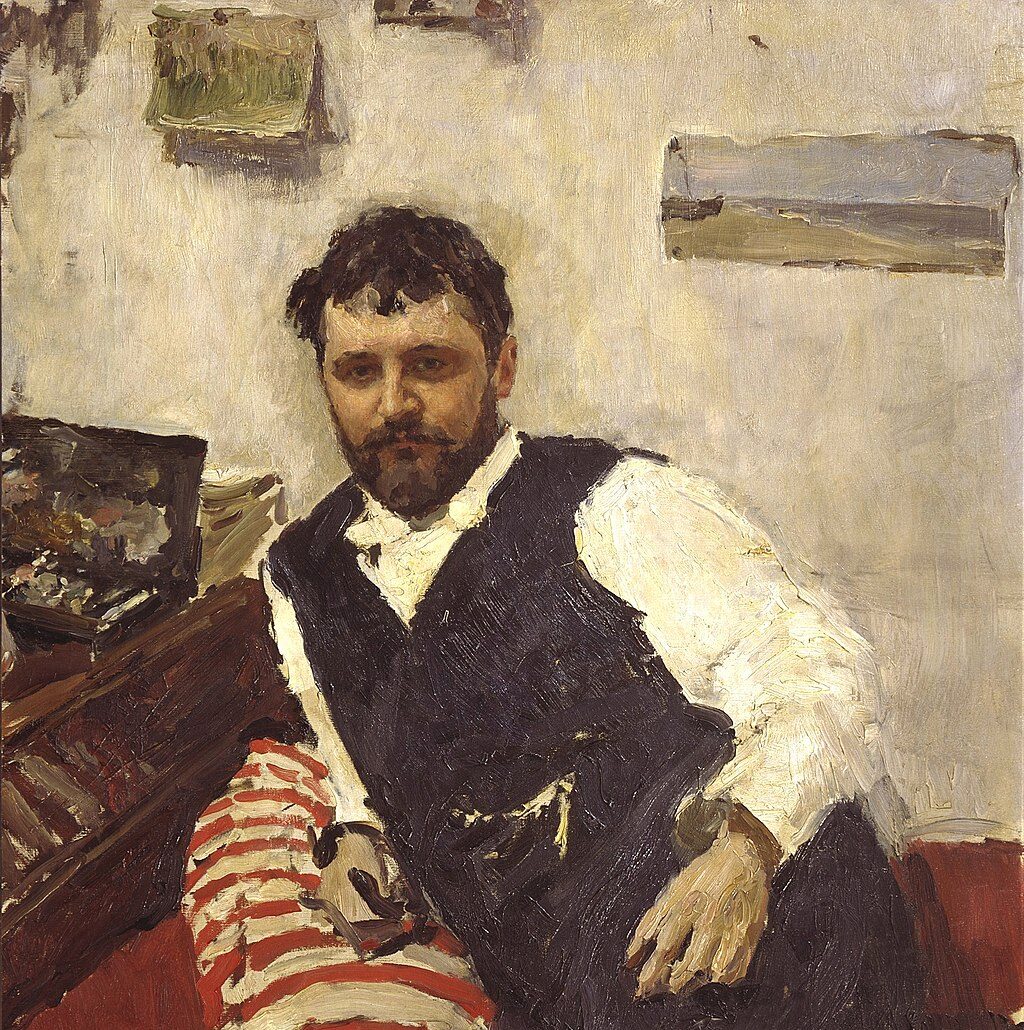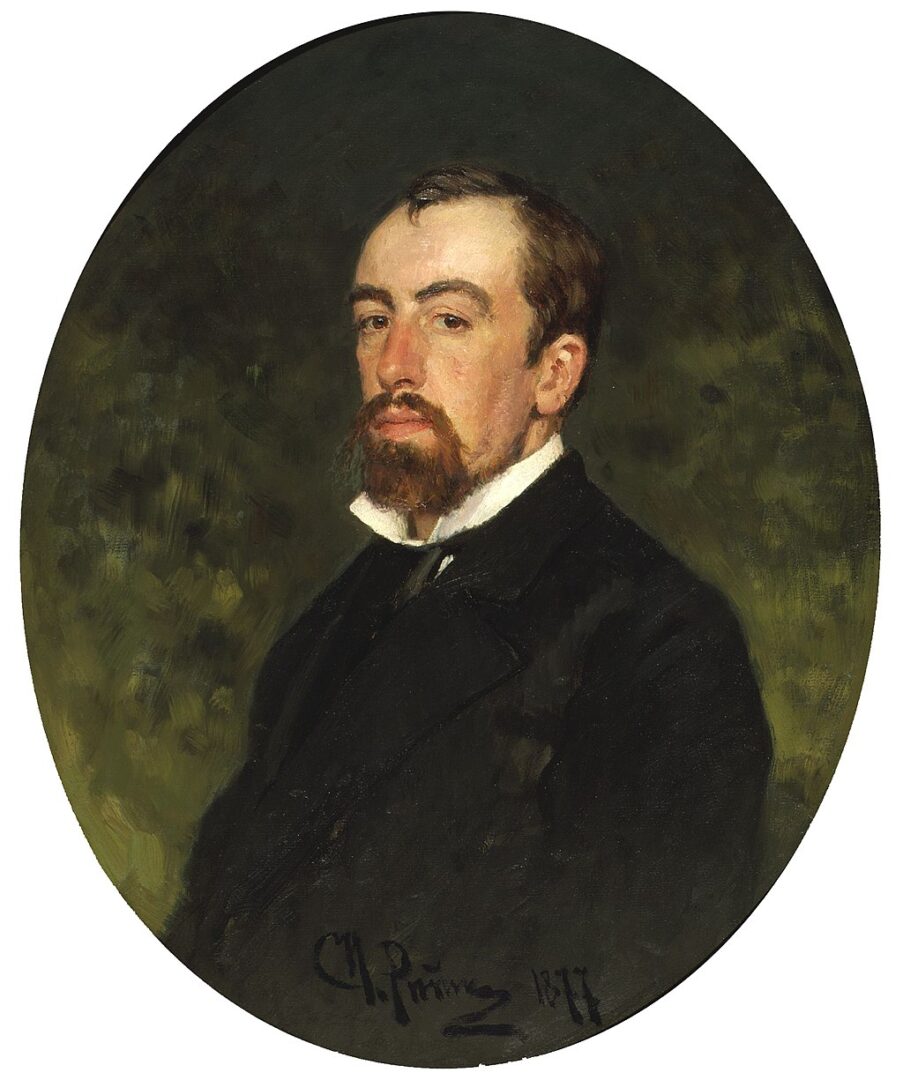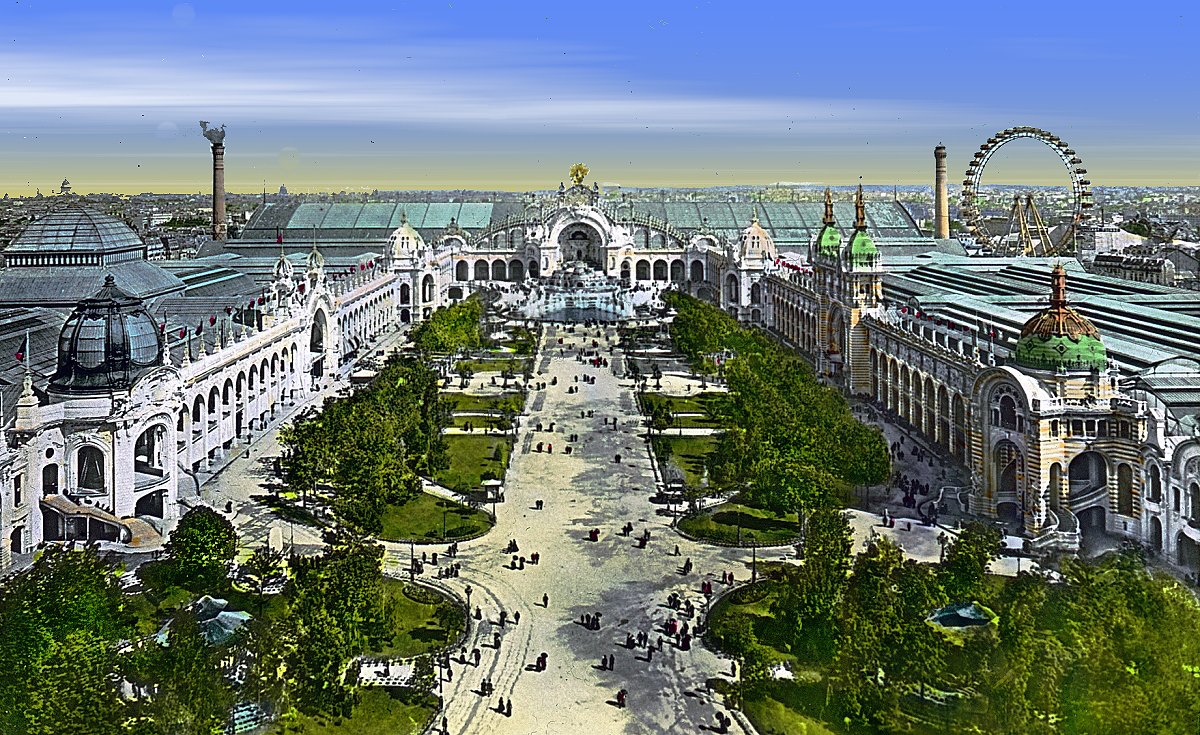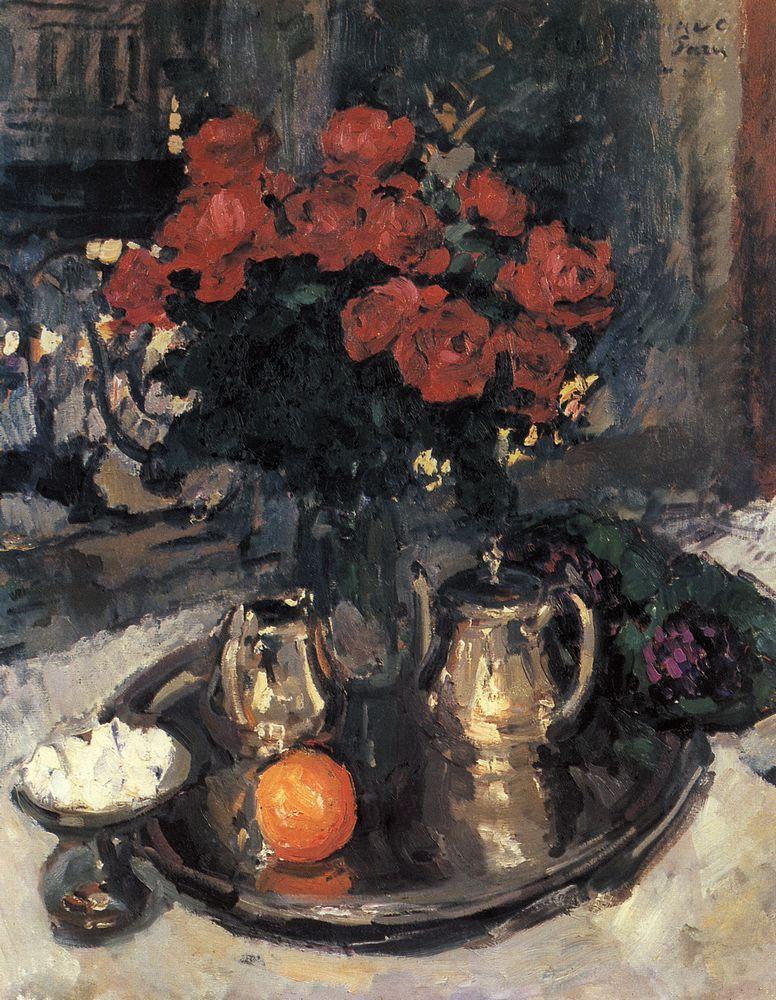Konstantin Korovin: Russian Impressionist Master for Art Collectors

Explore the life, legacy, and market value of Konstantin Korovin, a master of Russian Impressionism, in this comprehensive guide for art collectors and investors worldwide.
Table of Contents
Konstantin Korovin (1861–1939) stands as a master of Russian Impressionism, celebrated for his vibrant paintings of Parisian nightlife and sunlit Russian landscapes (christies.com). One of the first Russian artists to fully embrace the Impressionist style, Korovin blended French influences with a distinctly Russian spirit in his artwork (christies.com). Today, he is revered by art collectors and investors in the USA, Europe, and worldwide for his rich legacy and the enduring market value of his paintings. In this article, we explore Korovin’s detailed biography, his influence on Russian Impressionism, his travels and connections with other notable Russian artists, as well as his most famous works and their presence in museums and auctions.
Early Life and Artistic Beginnings in Moscow
Konstantin Korovin’s journey began in Moscow, where he was born into a wealthy merchant family on December 5, 1861 (en.wikipedia.org). Raised in an art-loving household, Korovin showed talent early and enrolled at the Moscow School of Painting, Sculpture and Architecture at just 14. There he studied under illustrious realist painters Vasily Perov and Alexei Savrasov, developing a strong foundation in academic art (en.wikipedia.org). During these formative years he befriended classmates Valentin Serov and Isaac Levitan, who would become lifelong friends and prominent artists themselves (en.wikipedia.org). This close-knit circle of young painters exchanged ideas and inspiration, setting the stage for Korovin’s pioneering role in Russian art.

— a pivotal teacher who guided Konstantin Korovin during his early years at the Moscow School of Painting and helped shape his path toward Russian Impressionism.
In 1881, Korovin briefly attended the Imperial Academy of Arts in St. Petersburg, but he grew disillusioned with its conservative approach and returned to Moscow to continue his studies (en.wikipedia.org).
Under the guidance of Vasily Polenov, a progressive teacher, Korovin was exposed to new ideas and introduced to the circle of patron Savva Mamontov at Abramtsevo (en.wikipedia.org).
The Abramtsevo Circle included leading figures of Russian art like Ilya Repin and Viktor Vasnetsov, who championed Russian folk themes and creativity (en.wikipedia.org).
Immersed in this innovative environment, Korovin began to experiment with brighter colors and looser brushwork.
By 1885, he was designing stage sets for Mamontov’s private opera, a role that honed his sense of drama and color – he created imaginative décor for operas like Aida and Carmen that year (en.wikipedia.org).
Travels and the Birth of a Russian Impressionist
Korovin’s first trip to Paris in 1885 proved transformative. Encountering French Impressionism firsthand was, as he later wrote, “a shock for me… in [the Impressionists] I found everything I was scolded for back home in Moscow” (en.wikipedia.org). Paris opened his eyes to new possibilities of light and color.
He also traveled through Spain during this trip, absorbing the warmth of Mediterranean scenes. These experiences ignited Korovin’s lifelong love of plein-air painting and modern subjects, effectively marking the birth of his identity as a Russian Impressionist painter (christies.com).
From 1888 onwards, his work showed a brighter palette and freer technique, aligning with Impressionist principles while retaining a realistic touch that valued “nature’s very breath” (christies.com).

The late 1880s and 1890s saw Korovin exploring diverse landscapes that would deeply influence his art. In 1888, he journeyed with Mamontov to Italy and Spain, producing works like On the Balcony, Spanish Women that captured sunny southern light (en.wikipedia.org). He also ventured across the Russian Empire, from the Caucasus mountains to Central Asia, seeking exotic and vivid subjects (en.wikipedia.org). Back home, Korovin joined the Peredvizhniki (Wanderers) exhibitions, contributing works that introduced Impressionist color into those realist art shows (en.wikipedia.org). By the 1890s, he had also become associated with Mir Iskusstva (“World of Art”), the influential art movement led by Sergei Diaghilev, further cementing his role in the vanguard of Russian art (en.wikipedia.org).
One of Korovin’s most famous trips was to the Russian North. Fascinated by Arctic light, he traveled to the coast of Norway in 1888 and later, in 1894, journeyed with his friend Valentin Serov to the far north during the construction of the Northern Railway (en.wikipedia.org). There, Korovin painted haunting polar night scenes such as Hammerfest: Aurora Borealis (1894–1895), capturing the delicate web of grey tones and eerie lights of the Arctic sky (en.wikipedia.org).
These northern landscapes, though somber in palette, demonstrated his Impressionist technique adapted to snow and moonlight. Korovin’s ability to evoke atmosphere was so notable that he was commissioned to create an immersive Far North display for the 1896 All-Russia Exhibition in Nizhny Novgorod – he painted ten large canvases of Arctic life for the pavilion (en.wikipedia.org). (After the exhibition, those monumental works were eventually installed in Moscow’s Yaroslavsky Rail Terminal and later transferred to the Tretyakov Gallery for preservation (en.wikipedia.org).)

By the turn of the century, Korovin had earned international acclaim. He designed the Central Asia section of the Russian Empire’s pavilion at the 1900 Paris World’s Fair and won the prestigious Legion of Honour in Paris for his contributions (en.wikipedia.org).
This award underscored how successfully Korovin had brought Russian art into conversation with French Impressionism on the world stage.
Indeed, as art historians note, he is often credited as the first Russian painter to truly engage with French Impressionism, adapting its subjects and palette to Russian art (christies.com). Whereas earlier Russian painters admired French art from afar, Korovin’s 1885 Paris encounter directly channeled Impressionist techniques into his canvases at home.
Connections with Notable Russian Artists and Cultural Figures
Throughout his career, Konstantin Korovin moved in illustrious artistic circles and influenced peers across disciplines. As a young man he remained close to his friend Valentin Serov, and the two often painted together – Serov even portrayed Korovin in a famous 1891 portrait (en.wikipedia.org). Korovin was also a lifelong friend of landscape master Isaac Levitan, and their shared passion for capturing Russia’s natural beauty is evident in their works. Through Savva Mamontov’s circle, Korovin interacted with established artists like Ilya Repin and the Vasnetsov brothers, learning from their focus on Russian folklore and history (en.wikipedia.org). These connections enriched Korovin’s perspective, helping him infuse French Impressionist style with Russian themes.
Korovin did not only mingle with painters – he was deeply involved in the broader cultural scene. In the late 1890s, he transitioned to designing sets for major theaters. He worked with Konstantin Stanislavsky in Moscow and became the chief stage designer for the Imperial Mariinsky Theatre in St. Petersburg (en.wikipedia.org). Here, Korovin revolutionized stage décor by creating atmospheric “mood” sets rather than flat backdrops. His expressive designs for productions like Faust (1899) and Sadko (1906) became legendary for enhancing the drama with Impressionistic lighting and color. This theatrical experience later informed the cinematic composition and lighting in his paintings.
Korovin’s circle extended to writers and musicians as well. He was friends with the great opera singer Feodor Chaliapin – Korovin’s Portrait of Feodor Chaliapin (1915) remains a celebrated depiction of the bass vocalist (en.wikipedia.org).
He also hosted literary figures like Maxim Gorky at his cottage in Crimea, engaging in lively creative exchanges (christies.com). In 1909, Korovin returned to academia as a professor at the Moscow School of Painting, where he mentored a younger generation of artists until 1913 (en.wikipedia.org).

His students and followers would carry forward his blend of Impressionist color with Russian sensibilities, spreading his influence in early 20th-century Russian art (christies.com) (a period explored in our in-depth look at Russian Art in the 20th Century).
Notably, Korovin’s life paralleled those of other Russian artists who straddled two worlds. Like his compatriot Nicolai Fechin – who also trained in Russia and later found success abroad – Korovin bridged Russian and Western art. And similar to Nicholas Roerich’s legacy, Korovin’s work helped introduce Russian artistic heritage to international audiences. His connections and collaborations ensured that he was not an isolated genius, but rather an integral part of Russia’s creative elite during a vibrant era.
Vibrant Travels: From Parisian Boulevards to Crimean Shores
Travel was a constant source of inspiration for Korovin’s art. He had a particular love for Paris, which became one of his favorite subjects to paint.
After his first revelatory trip in 1885, Korovin visited Paris frequently and even after leaving Russia he would settle there.
He painted the French capital obsessively, creating numerous views of Parisian cafés, boulevards, and night scenes.
Some of his notable works include A Paris Café (1890s) and Cafe de la Paix (1906), which capture the city’s elegant nightlife with flickering gaslights and lively crowds (en.wikipedia.org).
He once remarked that Paris was “the city of elegant fun” yet also a place for reflection – a duality he expressed by showing both the glittering lights and quiet corners of Parisian bistros in his paintings. Unlike many Impressionists who focused on daylight, Korovin often portrayed Paris at night, mastering the challenge of painting artificial light with subtle hues of blues, pinks, and gold. These Paris scenes, some painted on site and others later from memory, remain highly prized by collectors for their cosmopolitan charm.
Equally important were Korovin’s travels within the Russian Empire. Starting in 1910, he began spending summers in Gurzuf, a picturesque coastal village in the Crimea on the Black Sea. He bought a small house there on the seashore – “a miraculous house,” as he described it (christies.com) – which became a retreat and an outdoor studio. Korovin returned to Gurzuf every summer until 1917, often playing host to artist friends like Ilya Repin and Vasily Surikov who joined him for creative summers by the sea (christies.com).
In the bright Crimean sun, Korovin’s palette became even more radiant. He produced many of his most vibrant Impressionist works in Gurzuf, reveling in the “riotous colours and bright light of the Crimea” which, as one critic noted, inspired joyous paintings (christies.com). A prime example is Pier in Gurzuf (1914), a dazzling scene of boats and figures in the southern sun, considered one of his masterpieces.
This painting now hangs in the State Russian Museum in St. Petersburg (christies.com), testament to its importance. Another work, Roses and Violets (1912), a sunlit still life of flowers set against the azure Black Sea, resides in the Tretyakov Gallery in Moscow and is hailed as one of his most accomplished still lifes (christies.com).

Korovin’s ability to adapt his style to different locales is a hallmark of his career. Where the bleak northern landscapes of Norway and the Arctic yielded canvases with cool, muted tones, the sun-drenched South of France and Crimea drew out warm, high-key colors in his art (christies.com).
Yet across these contrasts, his personal vision remained consistent: Korovin sought to convey “the beauty and joy of life”, as he once wrote, “the re-creation of this joy is the very essence of my picture, of every part of every piece of canvas I ever painted” (christies.com). This joyful aesthetic intent, whether depicting a snowy Russian village or a bustling Paris boulevard, endears his work to collectors who can almost feel the atmosphere emanating from his scenes.
Notable Korovin Paintings and Their Legacy
Korovin’s artistic legacy is preserved in many museum collections and continues to be celebrated in exhibitions. Some of his most famous and significant works include:

Hammerfest: Aurora Borealis (1894–1895) – An Arctic night scene painted during Korovin’s northern expedition.
This canvas captures the mystical glow of the aurora borealis over the Norwegian port of Hammerfest, rendered in delicate greys and greens (en.wikipedia.org).
Originally displayed in a grand expo, it was later installed in a Moscow train station and eventually moved to the Tretyakov Gallery for safekeeping (en.wikipedia.org).
Hammerfest exemplifies Korovin’s skill in conveying natural light effects and stands as a cornerstone of Russian Impressionism in the 1890s.

Portrait of Feodor Chaliapin (1915) – A striking portrait of the famed Russian opera singer, who was Korovin’s close friend. In this painting, Korovin depicts Chaliapin in a contemplative pose, using rich colors and expressive brushwork to capture the singer’s larger-than-life personality (en.wikipedia.org).
The portrait is not only artistically accomplished but also culturally important, immortalizing one of Russia’s great performers through Korovin’s eyes. This work has been displayed in major retrospectives and is a highlight for portrait enthusiasts.

Pier in Gurzuf (1914) – Painted during Korovin’s beloved Crimean summers, Pier in Gurzuf (sometimes titled Jetty in Gurzuf) shows a sunlit dock with boats on a turquoise sea and figures enjoying leisure time. It is celebrated for its “vibrant hues” and joyful ambiance, reflecting Korovin’s Impressionist response to the intense light of Crimea (christies.com).
The Pier in Gurzuf is part of the collection of the State Russian Museum in St. Petersburg, underscoring its status as one of the artist’s masterpieces. Art investors note that paintings from Korovin’s Crimean period are especially sought-after for their rarity and brilliance.

Paris Café at Night (c.1900s) – Korovin painted numerous Parisian night scenes; among them, his views of café terraces and boulevards at night stand out. In works like Paris, Café de la Paix (1906) and Paris Café by Night (1930s), he captured the glow of street lamps and the energy of urban nightlife.
These pieces often feature deep blues and blacks punctuated by golden lights, showcasing Korovin’s mastery in portraying the “bright, colourful, changeable life” of the French capital (paintingmania.com). Many of these Paris paintings reside in private collections or Russian museums (the Tretyakov Gallery holds a 1906 Paris scene as well (wikiart.org)). They remain highly popular at auction for their cosmopolitan appeal.

Roses and Violets (1912) – A luscious still life of pink roses against the blue sea, painted in Gurzuf. This work, housed in the State Tretyakov Gallery, Moscow, is often cited as one of Korovin’s finest still-life compositions.
It exemplifies his ability to infuse a simple subject with light and joy. Roses and Violets has become an iconic image in Korovin’s oeuvre, sometimes reproduced in art publications as a symbol of his “highly sought-after Crimean period” works (christies.com).
These notable pieces only scratch the surface of Korovin’s prolific output. He created over a thousand works, ranging from intimate pastel sketches to large oil canvases. His paintings today are featured not only in Russia’s top museums like the Tretyakov and Russian Museum, but also in European and American collections, thanks to Korovin’s emigration and the subsequent dispersal of his art. Exhibitions of Korovin’s work continue to travel internationally, allowing new audiences to appreciate his Impressionist genius within a distinctly Russian context.
Market Highlights: Korovin at Auction and Art Investment Outlook
For art investors and collectors, Konstantin Korovin’s artworks represent both aesthetic treasures and valuable assets in the Russian art market. Korovin’s paintings have a strong track record at auction, reflecting their desirability among global collectors (including a significant Russian diaspora in the USA and Europe). His market saw a particular boom in the mid-2000s when interest in Russian Impressionist masters surged.
Notably, the auction record for Korovin was set in 2005, when his canvas Gurzuf in Summer (1916) sold for an astonishing $1.9 million at a Sotheby’s London sale (mutualart.com). This sale far exceeded its estimate and was described as a sensational result at the time, signaling intense competition for top-quality Korovin works. It remains the highest price paid for a Korovin painting at public auction to date.
Prices for Korovin can vary widely depending on the artwork’s subject, size, and provenance. Smaller works on paper or less characteristic pieces have sold for only a few hundred dollars, while his major oil paintings regularly achieve six-figure sums. According to art market data, Korovin’s auctioned works since the late 1990s have realized anywhere from under $100 to nearly $2 million (mutualart.com).
In recent years, his paintings have averaged around $30,000–$50,000 for mid-sized oils, indicating a solid mid-market demand (mutualart.com). This means that while ultra-high prices are reserved for his most famous masterpieces, even more modest Korovin works carry significant value and liquidity. Importantly, Korovin’s name often features in specialized Russian art auctions in London, New York, and Paris – a testament to his enduring reputation.
Current geopolitical and economic trends also play a role in Korovin’s market. Despite periods of volatility, the appetite for classic Russian art remains strong in the international arena. The global art market in 2024 showed resilience, and Russian Impressionists like Korovin continued to attract buyers seeking both cultural significance and investment potential. Auction houses frequently include Korovin in their Russian Art sales; in a March 2025 fine art auction, for instance, his paintings were featured among the leading lots, indicating that demand has not waned. Collectors in the West appreciate Korovin for his Impressionist link to famous French painters, while Russian collectors cherish him as a national treasure – this dual appeal helps keep his market buoyant.
Furthermore, Korovin’s market is often discussed alongside that of other Russian masters of his era. Collectors who pursue Korovin often also look for works by artists like Filipp Malyavin or Nicolai Fechin, whose colorful styles complement Korovin’s. Recent sales reflect this trend; for example, a vibrant peasant scene by Filipp Malyavin fetched a strong price in a December auction, and a portrait by Nicolai Fechin was a highlight of our March 2025 auction catalog.
These results suggest a broader momentum in early 20th-century Russian art, benefiting Korovin’s market as well. Investors consider Korovin’s works as relatively scarce – many are in museums – which adds to their allure when good pieces come up for sale. His paintings also have a narrative that appeals to collectors: each canvas carries the story of a Russian artist who bridged cultures and endured historical upheavals (from the last days of the Tsars through exile in Paris).
In terms of art investment, Konstantin Korovin presents a profile of stable long-term value with occasional headline-grabbing peaks. His works have international appeal, and their auction performance has historically outpaced many peers in Russian Impressionism. Seasoned collectors note that acquiring a Korovin is not just buying a beautiful Impressionist painting, but also owning a piece of Russian cultural history. This intrinsic value underpins his market prices. For those building a collection of Russian art in the USA or Europe, Korovin’s paintings are often considered cornerstone pieces around which a broader collection of Golden Age Russian painters (Repin, Levitan, Serov) or émigré artists (like Roerich, Fechin) can be curated.
Legacy of Korovin in Russian Art History
Konstantin Korovin’s legacy is firmly cemented as a Russian Impressionist master who played a pivotal role in bringing Impressionism into Russian art. He lived through a dynamic period – from the Imperial era, through World War I and the Revolution, to exile in interwar Paris – and his art reflects this rich tapestry of experiences. Korovin’s influence can be seen in the generations that followed: artists in Soviet Russia who embraced color and light owe a debt to his trailblazing work, as do those in the Russian diaspora who looked back to the motherland’s artistic heritage.
His life’s journey, much like that of other great Russian artists of the early 20th century, has become the subject of renewed scholarly and collector interest. In recent years, exhibitions and journal articles have re-examined Korovin’s contributions, framing him as a key figure connecting Russian realism with modernist trends (christies.com).
For art collectors and investors today, Korovin offers a compelling blend of artistic excellence and cultural significance. His paintings provide not only visual delight – with their lush brushwork and atmospheric light – but also a story of East meets West, tradition meets innovation. Whether it’s a snowy Moscow street corner at dusk or a dazzling Paris café scene, a Korovin painting transports the viewer to the heart of a bygone world.
That timeless quality, paired with a track record of strong auction performance, makes Konstantin Korovin a name that continues to shine in the art market. As the global collector community deepens its appreciation for Russian Impressionism, Korovin’s art endures as a brilliant representative of that movement – a legacy that is both artistically rich and investment-worthy for generations to come.
For further reading on this topic, interested readers can explore Korovin’s biography on museum websites and art journals, or view current listings of Korovin artworks on auction house platforms. Resources such as the Tretyakov Gallery Magazine have featured articles like “Konstantin Korovin: His Paintings and Theatre Work” (macdougallauction.com), and DailyArt Magazine’s piece on Parisian Bistros in Art provides context on Korovin’s Paris scenes.
